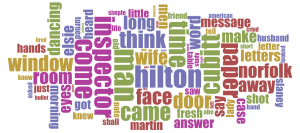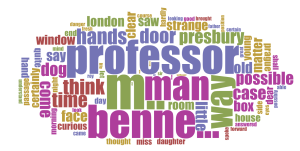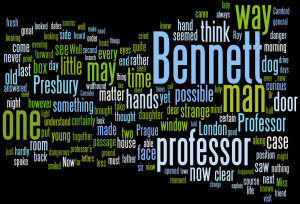Topics from 50 topics and 1000 iterations-
1) Money-money business hundred men asked company american pounds answered worth thousand red gold paid city pay headed answer fifty price
2) Murder– found dead man death crime body evidence terrible unfortunate attempt violence words occurred instantly action save murderer committed escape murdered
3) Sherlock’s study– table papers small box examined study showed left carefully marks signs examination wood books round carpet mark traces fire examine
4) Women- woman wife lady husband love married child girl life mother loved daughter maid beautiful ferguson mrs mistress ways character women
Topics from 25 topics 2500 iterations-
5) Crime– man police found inspector dead crime death body evidence reason murder blood night shot person
6) Letter/message-paper table hand papers note read letter pocket box book put letters drew short handed
7) Sherlock-holmes hand chair sat back looked fire air sherlock visitor pipe rose laid pray companion
Topics from 50 topics and 2000 iterations-
8) Journey/travelling-place train station carriage found town return started long line reached drove cross miles journey
9) Appearance-face eyes man dark tall looked features expression thin lips pale mouth figure companion appearance
10) Case-case interest points curious remarkable fact attention singular account investigation matter clue events incident problem




